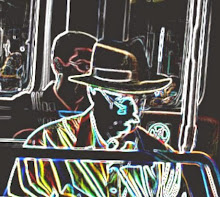-- and the early years of the 18th, too ...
When I first spotted the first volume of Neal Stephenson's Baroque Cycle at the book store my initial reaction was "Oh no!" (in the immortal words of Mr. Bill). It was so huge, at 900 pages, and so interesting to me, and so soon to be followed by two sequels of similar length, that all I could see was the huge investment of time I was sure to make in absorbing the whole opus. (The original three volumes were later printed in eight smaller installments, so it's not accurate to call it a trilogy.)
I put it off as long as I could, but this year I bought all three volumes in trade paperback format and wallowed my way through one of the most rewarding reading experiences I can remember. It's not the longest series I've got under my belt -- that distinction goes to the 20 volumes of Patrick O'Brian's epic about the Napoleonic Wars. But Stephenson's efforts are certainly to be classed with O'Brian's as mileposts in historical fiction.
Like O'Brian's work, Stephenson's is global in scope, with historical allusions going back to medieval alchemy and forward to contemporary science, cryptography, computers, and multinational corporate greed. The characters range from the noble in birth to the slave, from the greatest scientific minds of the day (Newton and Leibniz) to the self-centered idiots who generally people the rest of the world.
The principle characters are Daniel Waterhouse, a college roommate of Isaac Newton's who goes on to play a pivotal role in the machinations of the plot; Jack Shaftoe, a mercenary soldier and erstwhile street urchin who becomes a "vagabond king" legendary all over Europe; and one Eliza, a woman who was taken as a slave and escapes from a Turkish harem to become Duchess of the (mythical) island of Qwghlm and a femme fatale of international finance and intrigue.
If those names sound familiar then you must have read Stephenson's earlier work, Cryptonomicon, to which the Baroque Cycle forms an enormous prequel. In that novel, two generations of the 20th century descendants of Waterhouse, Shaftoe, and Eliza fight their way through World War II into the age of the Internet and global finance.
In all, the four volumes constitute a fascinating meditation on the nature of money, the influences of science and mathematics on the real world, and the origins and direction of technology. At the same time, the story is pure adventure, filled with sword fights, desperate battles and escapes from imprisonment, lust and romance, and the old tale of rags to riches -- and rags again -- that never fails to disappoint the reader.
Of course any good novel must come with a villain, and due to its size the Baroque Cycle has room for a number of them, all of whom come to wonderfully satisfying bad ends. But I won't spoil things by naming them or describing their fates. For that you'll just have to buckle up and go along for the ride.
What makes a piece like this work is, in a word, texture. Stephenson has achieved a nearly perfect synthesis of modern narrative with the best features of careful classical description. No detail is so minor that it can't become the subject of historical analysis, or etymology, or lengthy depiction, or all three, until the picture becomes almost like a memory of having had the experience. Repetition plays a role also -- I lost count, for example, of the number of allusions, all of them disgusting, to the Fleet Ditch (later to become Fleet Street) that sliced Baroque London with a reeking open sewer.
But the earthy horrors of the day are counterbalanced by the lofty flights of the first stirrings of modern science, the birth of the Age of Reason. You can argue that it's an age whose time has yet to come, but its aspirations are as timely now as they were 300 years ago. After setting down the last volume, I almost felt as if I'd been reading for that long, or that I could remember what it was like to be there ... how I myself had lived, centuries in the past.










No comments:
Post a Comment